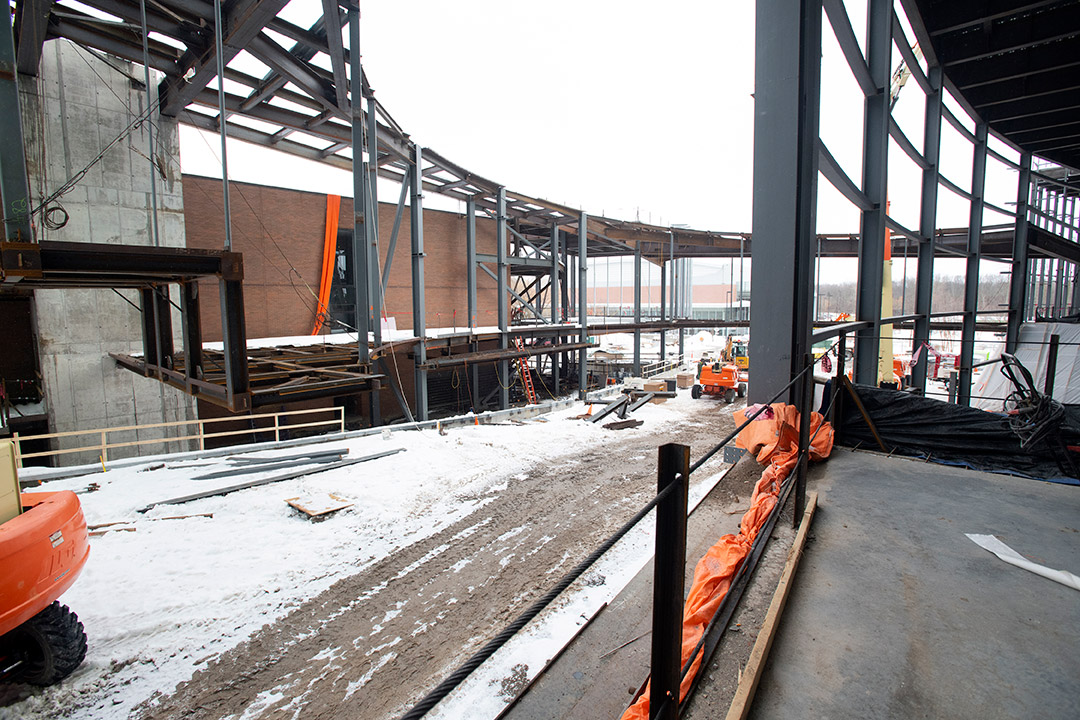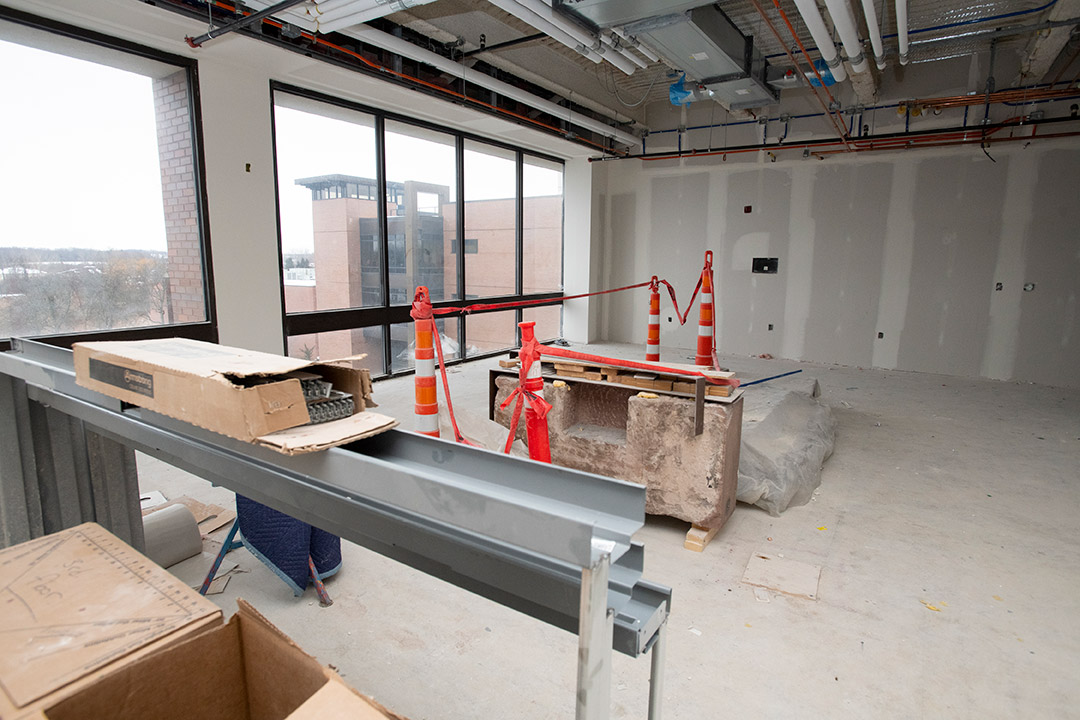Planning for what goes in the SHED is a community effort
Committee work focuses on details of new maker spaces, classrooms, and performing arts center
A. Sue Weisler
The Student Hall for Exploration and Discovery (the SHED) is on track to open in fall 2023.
While the maker space and performing arts complex takes shape at the heart of the RIT campus, working groups are filling in the details of what will go inside the building.
RIT vice provost Christine Licata is coordinating the planning groups focused on the “places and spaces” in the SHED. The teams are large, Licata said, to invite different perspectives reflective of the RIT community.
“What happens inside the SHED will transform the way we teach classes, the way we showcase our performing arts, how we celebrate our student teams and clubs and their creating and innovating, and how we demonstrate ‘all things RIT,’” Licata said. “It will be the nexus of RIT, I think, the center, the heartbeat, because it will represent all we do. And we want it to be inclusive of faculty, students, and staff. We’re motivated by wanting to get this right and we want to hit the ground running when the SHED opens.”
The Student Hall for Exploration and Development (SHED) is RIT President David Munson’s vision of a year-round showcase of technology, the arts, and design inspired by the university’s Imagine RIT: Creativity and Innovation Festival. Covering more than 120,000 square feet of new construction, the SHED is the largest addition to the RIT campus in more than 50 years. The project is funded in part by a $17.5 million gift from RIT trustee and 2009 alumnus Austin McChord.
A. Sue Weisler
The glass roof of the College of Science’s atrium can be seen from a new classroom under construction in the SHED/Wallace Library.
Licata staged the overlapping rollout of the different working teams. The SHED Classroom Utilization Team was assembled first to begin addressing the large areas dedicated to learning spaces in the SHED. The second initiative was the Classroom Space Exchange and Research Space Re-allocation Committee. Decisions will be made this year that will reallocate space for research during the next three to four years, Licata said.
The third committee was the Student Performance Teams and Other Student Teams/Clubs. This group focuses on how to bring as many student teams and clubs into spaces in the SHED where they can create and display their work in real time. This has implications for spaces on the A-level and upper floors of the SHED.
The Performing Arts Team was the last one started because much of the planning was in place for the Sklarsky Glass Box Theater, a $2.5 million gift from 1978 alumnus and trustee Frank Sklarsky, and other performance spaces. The team is addressing usage, storage space, technology needs, and staffing.
The working groups strive to be as transparent as possible about their status and decisions to be made.
“We’ve made it a priority to update the governance groups and our leadership teams, and we’ll continue to do that to make sure that everyone—from potential occupants to passersby—has a good idea about what the SHED is going to mean to the campus,” Licata said.














